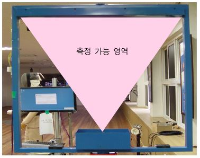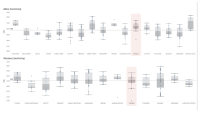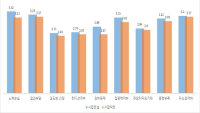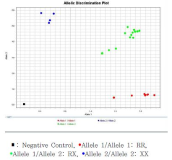PURPOSE The purpose of this review was to summarize the current knowledge on the trends in athletes’ health problems (and their preventive strategies) caused by low energy availability (LEA) and relative energy deficiency in sports (RED-S). METHODS In this narrative review, we summarized previous studies by searching the literature in the PubMed, Google Scholar, and Science Direct databases. RESULTS Energy availability (EA) refers to the amount of energy from caloric intake used for exercise, and a LEA is considered as a surrogate marker of RED-S. In several previous studies, chronic low energy availability in female athletes has been reported to cause health problems such as endocrine dysfunctions, immunosuppression, and psychological disorders, and to also affect the hypothalamic-pituitary-gonadal (HPC) axis and bone health. Moreover, it has been suggested that an increase in injury risk and a decrease in exercise performance may occur. CONCLUSIONS Since it can be difficult to recover from the health deteriorations caused by RED-S, early detection (of related signs and symptoms) and prevention are very important. Therefore, athletes, coaches, and parents need to develop educational programs that ease the recognition of the problems caused by various symptoms related to RED-S and promote educational interventions.

Purpose The purpose of this study was to examine the relationship between performance factors and physical fitness in secondary school female biathlon athletes. Participants in this study were 14 female biathlon athletes. Methods All factors such as aerobic capacity(VO2max, %AT), wingate test(peak power, average power, fatigue index), isokinetic test(trunk, knee, hip, ankle), 1RM test(leg press, chest press, lat pull down), physical fitness(grip, knee and back muscle strength, sit & reach, power, agility) were tested. In order to analyze collected data, pearson product moment and multiple regression analysis were utilized. The results were summarized as follows : First, there was a significant correlation between aerobic. Results The results were summarized as follows : First, there was a significant correlation between aerobic capacity and three factors(standing broad jump, isokinetic test 60° right knee extension)(p<.01). There was a significant correlation between wingate test and four factors(isokinetic test 30° left ankle ever, 30° right ankle ever, 120° left ankle inver, leg press)(p<.10). Conclusion These results suggested new evidence that ankle strength is necessary for performance in female biathlon athletes.

PURPOSE This study aimed to investigate conditioning management and perception in Korea Ladies Professional Golf Association golfers and elite amateur female golfers. METHODS Physical characteristics and performance-related factors were investigated through a short version of the conditioning questionnaire consisting of 16 questions on five factors, surveying 129 female professional golfers and 174 elite amateur female golfers. The components of the questionnaire included physical fitness (four questions), injury (four questions), nutrition (three questions), mental (three questions), and performance strategy factors (two questions). Data were analyzed using IBM SPSS Statistics ver. 23.0 (IBM Co., Armonk, NY, USA). An independent t-test was used for comparison between groups. RESULTS Physical fitness-related factors showed significant differences in all four questions between groups (p<0.001–0.031), injury-related questions showed significant differences between groups in three questions (p<0.001–0.003), and one nutrition-related question was different between groups (p<0.001). CONCLUSIONS Differences were seen in conditioning management factors recognized between professional and elite amateur female athletes. Future research on conditioning questions and differences in effects according to actual performance will be needed.
The purpose of this study was to analysis of moving distance during games, time and heart rate for hockey games using GPS (global positioning systems) by positions in Korea national female athletes. The subjects were Korea national female hockey players (n=13) including 4 forwards, 4 midfields, and 5 fullbacks that participated in five Korea vs. Japan international games. All subjects were wearing GPS throughout the games. The results were as follows: Firstly, the average total travel distance per game was approximately 5.7km and higher in the second half. Physical movement in the games was not different from positions where 70% of physical movement was performed at low intensity and 30% at moderate and/or vigorous intensity, suggesting that the subjects; physical movement was performed at the appropriate level of exercise intensity. Secondly, during the game, the subjects performed physical movement faster than 11km/h for 22 minutes, indicating that the subjects could maintain their physical movement at a relatively faster speed throughout the games. In particular, midfields showed a greater amount of physical movement at moderate speed. Thirdly, the average exercise heart rate was 145bpm, which was equivalent to 60% of HRmax. The subjects maintained their average exercise heart rate greater than 150bpm (above 60% of HRmax) for 40 minutes during the games, indicating that the players had an ability to maintain physical movement at high intensity throughout the games. In conclusion, in spite of the fact that Korea national female hockey players have an ability to maintain physical movement at a relatively faster speed and higher intensity, their physical movement and performance are often affected. Therefore, it is necessary to develop and apply the specific interval training program for national female hockey players that can facilitate the faster recovery from the repetitive physical movement requiring power and speed at high intensity.

The purpose of this study was to investigate basal physical fitness and smash speed of elite national badminton players. To perform this study, total forty six korea national badminton player were participated : twenty two male players(age : 20.90±2.24years, height : 179.30±5.40cm, weight : 73.80±7.12kg, career : 11.27±1.88years) and twenty four female players(age : 19.45±1.95years, height : 167.83±4.36cm, weight : 61.39±3.60kg, career : 9.50±2.47years). Each subjects performed the 6 basal physical fitness trials : agility, muscular endurance, muscular strength, flexibility, balance and cardiorespiratory endurance. And the speed of badminton smash were analysis by using radar gun when players were standing smash success. To determine the difference between two groups, independent samples test was used. As a result, we found that there was a large difference male players and female players in basal physical fitness and smash speed. First, male players were significantly strong in agility(side step 10%), muscular endurance(repetitional jump 12%), muscular strength(left grasping power 3%, right grasping power 31%) and cardiorespiratory endurance(20m suttle run 31%). On the other hand, female players were relatively strong in flexibility(sit and reach 27%) and balance(standing on one leg with eyes closed 51%). Second, maximum smash speed show that male players were about 57km/h(24%) faster than female players(male : 247.72km/h, female : 190.37km/h). Based on the findings, we shall be applicable training program to improve flexibility, balance of male athletes and agility, muscular endurance, muscular strength, and cardiorespiratory endurance of female athletes. our results will be appliable to improve the athletic performances of national badminton players by the coaches in the future.


Purpose The purpose of this study was to compare the official world records of UIPM in the last 3 years to find out the relationship between the score characteristics of fencing, swimming, equestrian, and laser-run events in the final rankings and to analyze the relative importance of each event. Methods For 3 years, from 2017 to 2019, a total of the data were collected, the final rankings, fencing conversion scores, swimming conversion scores, equestrian scores, and laser-run conversion scores for all male and female athletes who participated in the UIPM Level 1 World Cup and World Championships(1,197 finals and 2,173 qualifiers). The Multiple regression analysis was used to establish the relationship between the response(subjective) variable and the conversion score of the four explanatory(independent) variables. Results The results were compared by qualification (n = 2173) and final (n = 1197) by dividing into male (n = 1179) and female (n = 1591), and the fencing score was qualifications (male β= -.691, female β= -.533) and the finals (male β= -.632, female β= -.632), it showed the greatest influence in all. On the other hand, the swim score showed the lowest impact on both qualifications (male β=-. 021, female β=-.196) and finals (male β=-. 087, female β=-. 207). The fencing event plays a major role in passing the qualifiers and is a big variable for good performance in the finals. On the other hand, in the case of swimming scores, both men and women had the lowest impact on the final ranking, and there is a limit to the final performance of swimming scores in both qualifiers. Conclusion In conclusion, it is necessary to analyze and systemize the fencing skills of the world’s best athletes, including Korean athletes, to improve the Korean fencing athletes' performance, and through such scientific analysis, a system that enables fast and flexible responses to the upcoming Olympic. Additionally, even though the importance of all sports should be levelled due to the characteristics of modern pentathlon, relative importance is biased toward fencing and swimming events are neglected. Therefore, it is deemed necessary to conduct a follow-up study on whether the scoring system in modern pentathlon consists of a scoring system that supports the records of each event and the upper and lower scoring system.





PURPOSE The purpose of this study was to identify the scoring patterns of male and female Korean judo athletes by weight class, based on major international competitions from 2016 to 2021. METHODS We analyzed 1,508 scoring techniques, consisting of penalty, Waza-ari, and Ippon connected techniques, from male and female Korean athletes who participated in the Grand Prix, Grand Slam, Masters, World Championships, and Olympics. Chi-squared tests were conducted to examine differences in rounds, time, results, techniques, and continent by weight class. RESULTS In terms of differences in rounds, statistically significant differences were found in the men's lightweight and women's heavyweight categories. Statistically significant differences were found in the following: regarding differences in match time, in the men's heavyweight category; regarding match results, in the men's heavyweight category; and regarding differences in technique type, in the men's middleweight and heavyweight categories and in the women's lightweight and heavyweight categories. Finally, in terms of opponent continents, significant differences were found in both men's and women's lightweight categories. CONCLUSIONS In conclusion, this study confirmed the differences in wins and losses of male and female Korean athletes according to their weight classes. Based on this, it is necessary to analyze and systematize the technology types of the world's top athletes, including Korean athletes, to improve their judo performance.

Purpose The purpose of this study was to examine the difference and consistency of kinematic variables for each athlete by selecting the official records of the world's elite female triple jumpers to evaluate the performance level. Methods Three athletes who won the prizes at the World Championships Daegu 2011 Women's Triple Jump were selected as the study subjects, and only the successful trials were used for analysis. Pearson's correlation analysis was conducted with the kinematic variables in the hop, step, and jump phase, respectively. Also, kinematic variables with statistically significant correlations between braking time and pushing time and related variables were described separately. The duty factor and support factor for the hop, step, and jump of support phases were calculated. Results The successful trials rate were 66.7% for Olha, 50% for Olga, and 83.3% for Caterine. In the last three stride distances of the approach run, Olha and Caterine had a “medium-long-short” pattern and Olga had a “long-short-medium” pattern. There was no difference in the duty factor value between hop and jump phases in the ‘hop-dominate’ technique type, but there was a difference in the jump phase in the ‘balance’ technique type, and the duty factor value in the step of both technique types was greater than that of hop and jump phases. As for the percentage of the support factor, Olha and Caterine had a characteristic that the percentage of braking time in step and jump phases was opposite. On the other hand, Olga had the same percentage for the hop and step phase, and a smaller percentage for the jump phase. Conclusion To increase the accuracy of the board touch-down, maintain a certain last stride(1SL) depending on the technique type. This consistency of the approach run increases reduces distance loss on the take-off board and increases the successful rate of each trial. The duty factor can judge both the performance level and the technique type of triple jump, and the support factor is a variable that can classify the technique types of hop, step, and jump phases. If both the relative time required for the triple jump and the variability of the support time(braking and pushing) for each phase are constant, the difference in records by trial will be small.


Purpose The purpose of this study was to provide useful information on the improvement of performance by measured the psychological-physiological stresses experienced by elite shooters during a competition. Methods Thirty-eight elite shooters participated in this study (Male = 13, Female = 25). Psychological stress was measured and used for this study based on the stress factors found in the elite target stress study by Park(2015). The cortisol, a physiological stress hormone, was measured using saliva. Results The reliability of the psychological stress sub-factor pre-post analysis results showed no statistically significant. The concentration of cortisol measured on the day before the competition (0.1704 µg/dL) significantly increased immediately before the competition (0.3558 µg/dL). Cortisol immediately before the competition showed negative correlation (r=-.361, p=.036) with the competition score, and the regression variable of cortisol was 13%. Conclusions In this study, physiological stress had a negative effect on elite shooters performance compared to psychological stress.




The ACTN3 R577X polymorphism has been associated with an elite athletes status. Several studies have determined that the R allele is connected with power-oriented athletic performance, whereas the nonfunctional XX genotype may give some beneficial effect for endurance performance. The main aim of the study was to determine the possible interaction between the ACTN3 R577X polymorphism and an power-oriented athlete status in Korean elite athletes(wrestling 31, judo 13, boxing 16, fencing 6, cycle 16, ≤400m athlete 18). Each athletes performed a 30-second WAPtest with a resistance equal to 7.5% for male and 5% for female body weight. Genotyping for the ACTN3 R577X (rs1815739) polymorphism was performed using the TaqMan approach. The ACTN3 R577X genotypes exhibited a HardyWeinberg equilibrium distribution in our population. The relative and absolute average power results of the 30-second Wingate test did not differ significantly among the genotypes. However, the relative peak power result of the Wingate test was significantly higher in the R-allele- dominant model groups than in the XX group in male but not female athletes. These results suggest that the ACTN3 R allele is associated with the relative peak power during the Wingate test in male Korean elite athletes.
